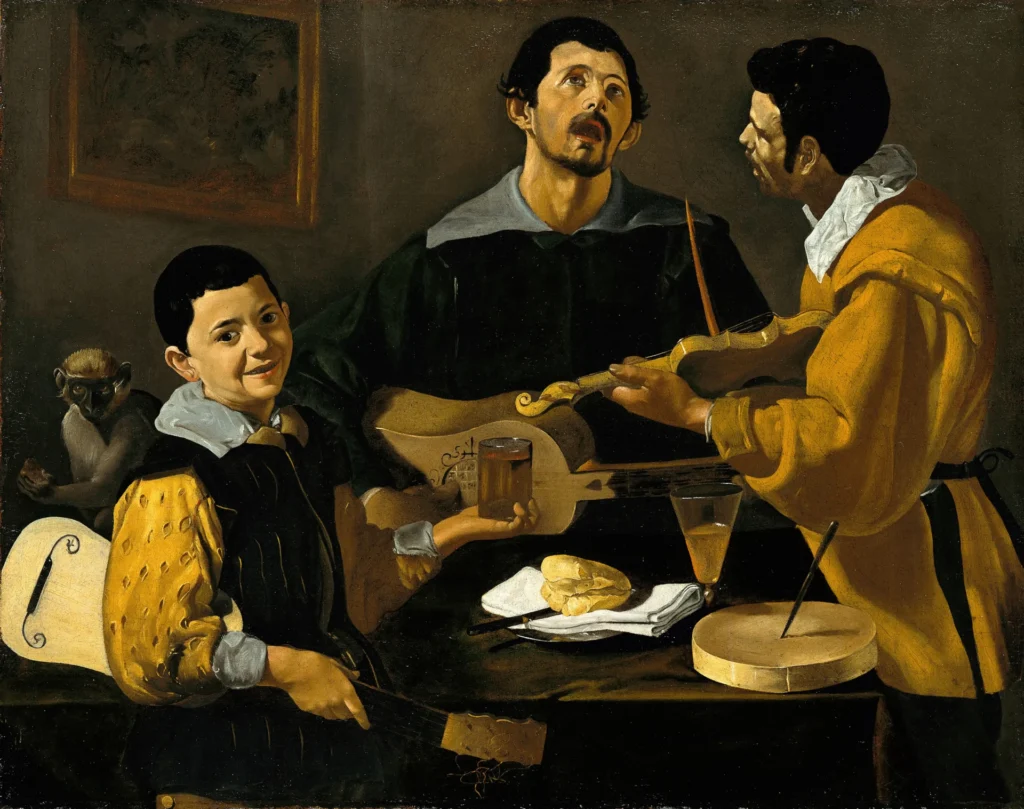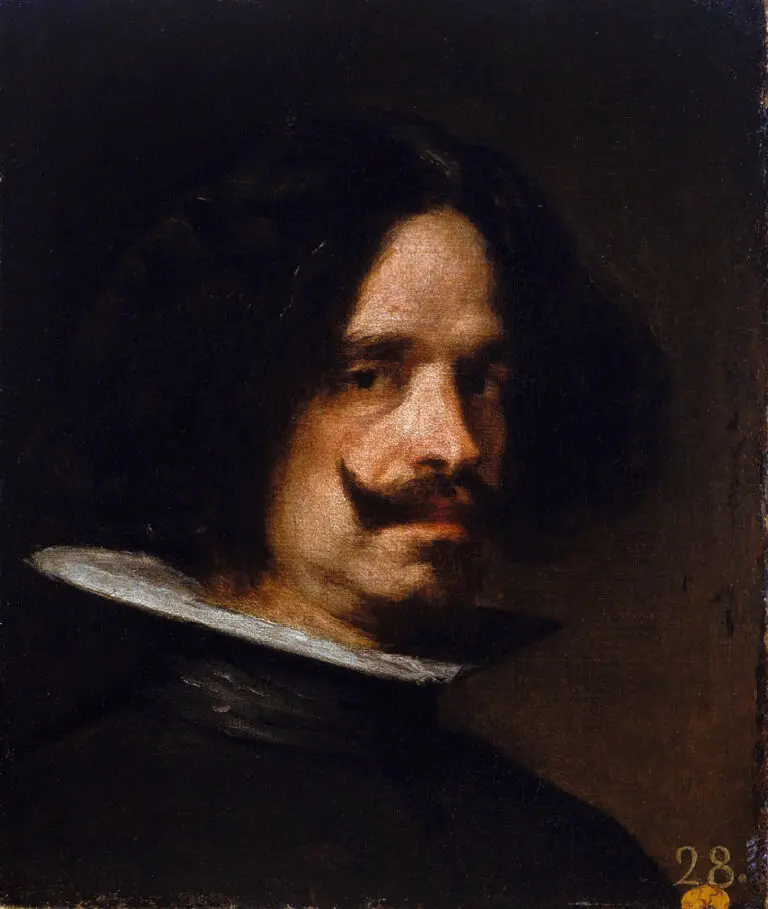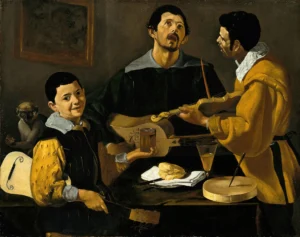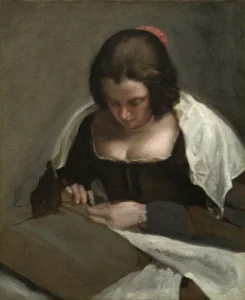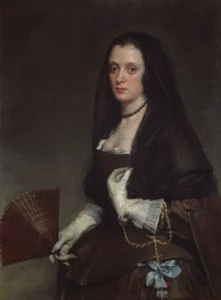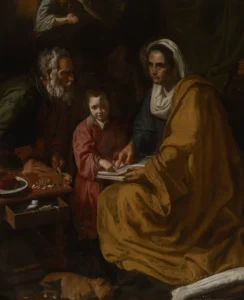The Three Musicians (ca 1618)
The Three Musicians is a captivating oil painting created by Diego Velázquez around 1618. As a prime example of the bodegón style from his early Seville period, it presents a lively scene of three young men engaged in music and revelry. Using chiaroscuro, Velázquez crafts a vivid contrast of light and dark, lending volume to the figures as they partake in everyday pleasures. The inclusion of symbols like the monkey and everyday objects enriches the narrative, challenging viewers to consider deeper interpretations that transcend mere genre representation.
Year 1618
About the Artwork
This masterpiece by Velázquez reveals the artist's keen observation of everyday life during his early career. The painting captures a convivial gathering where music, food, and camaraderie intersect. The subjects, seemingly lost in their jovial activities, represent a slice of life from the 17th century, while the monkey introduces an unsettling yet fascinating element. This dual approach raises questions about social context and allegorical meanings, showcasing Velázquez's ability to blend humor with a critique of societal behaviors. The work serves not only as a visual delight but also as a commentary on the human experience, making it a noteworthy contribution to the genre painting of its time.
Did You Know
Liked what you see? Add it to your collection.
Enjoyed reading? Share it.
... continued
The Three Musicians
is an oil on canvas painting created by the Spanish Baroque painter Diego Velázquez around 1618. Here are some key points about the artwork:
Period and Style
This painting is from Velázquez's early Seville period and is one of approximately ten works he executed in the bodegón style before 1622. The bodegón style focuses on everyday life and still-life elements.
Composition and Technique
The painting depicts three young men gathered around a dinner table, engaged in eating, drinking, and playing music. The scene is illuminated with strong contrasts of light and darkness, a characteristic of the chiaroscuro technique, which creates a sense of volume by emphasizing the contrast between light and dark shadows. The light source is from the left, casting sharp shadows and intense highlights on the figures.
Subjects and Symbols
Two of the men are playing stringed instruments and singing, while the youngest holds an instrument under his arm and a glass of wine in his hand, displaying it with a mocking smile. In the background, a monkey is seen holding a pear, which adds a grotesque element to the scene. Other elements include a loaf of bread, a glass of wine, and a piece of cheese with a knife, allowing Velázquez to study various textures.
Interpretation
The painting raises questions about its interpretation. On the surface, it is a genre representation of everyday life, but it may also contain hidden layers of meaning, making it readable as an allegory. This dual interpretation adds depth to the work.
Location
The Three Musicians is part of the collection at the Gemäldegalerie in Berlin.
Dimensions
The painting measures 88 cm × 111 cm (35 in × 44 in).




